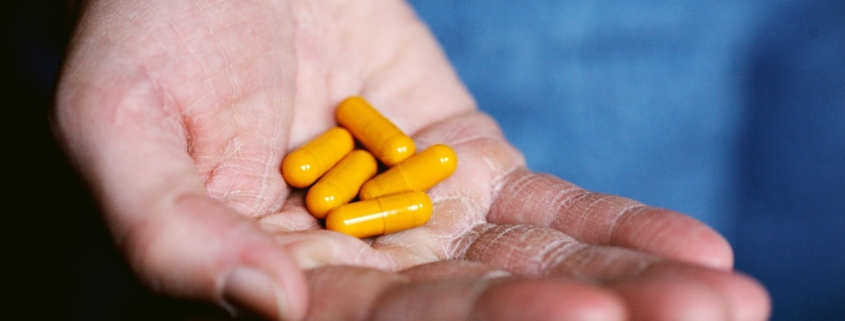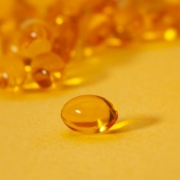Everything about phosphatidylcholine
Basic Understanding
You will be inform of everything about phosphatidylcholine today. Among other foods, Phosphatidylcholine is a molecule is in eggs, soybeans, mustard, and sunflower. Every cell in the body contains it naturally. The body can obtain choline from phosphatidylcholine as well.
Phosphatidylcholine converts by the body into the molecule acetylcholine. Acetylcholine is crucial for memory and other bodily processes. In persons with a certain type of inflammatory bowel illness, phosphatidylcholine may assist to protect the wall of the large intestine (ulcerative colitis).
Other names
Lecithin and phosphatidylcholine are two distinct substances, but the terms are occasionally use synonymously. Phosphatidylcholine, a component of lecithin, is made up of choline.
Characteristics
The Role of Phosphatidylcholine in the Body. “A phospholipid is a lipid that contains a phosphate group and is a crucial component of cell membranes,” explains “Phosphatidylcholine, or PC for short, is not a vitamin but a phospholipid, one of the key components that make up our cell membranes.
Phosphatidylcholine molecules are amphipathic; however, they have a very low monomeric solubility (about 1010M) [5]. As a result, phosphatidylcholines rarely move spontaneously across membranes and instead form liquid crystalline bilayers.
In which part of the body is found with knowing its role
Phosphatidylcholine is mostly present in the exoplasmic or outer leaflet of a cell membrane, where it serves as a primary component of pulmonary surfactant and cell membranes. Phosphatidylcholine transfer protein is hypothesise to move it within the cell between membranes (PCTP).
A crucial component of the colon’s mucosal layer, phosphatidylcholine (PC) functions as a surfactant within the mucus to form a hydrophobic surface that inhibits bacterial entrance.
Food that contains phosphatidylcholine
Eggs (28.0%), fish (18.5%), and meat were the main sources of phosphatidylcholine (18.3 per cent). 65 percent of the total phosphatidylcholine consumption was contribute by all of these items. The meat was the dietary type that contributed the most to sphingomyelin in the diet, followed by dairy (23.3%) and fish (28.5%). (21.7 percent )
What distinguishes phosphatidylcholine from choline?
The main distinction between choline and phosphatidylcholine is that the former is a derivative of choline made up of both choline and phosphoglyceric acid, whilst the latter is a quaternary ammonium molecule. A eukaryote’s structure includes key substances like phosphatidylcholine and choline.
Reasons to start taking phosphatidylcholine
Phosphatidylcholine converts by the body into the molecule acetylcholine. Acetylcholine is crucial for memory and other bodily processes. In persons with a certain type of inflammatory bowel illness, phosphatidylcholine may assist to protect the wall of the large intestine (ulcerative colitis)
Its most effect for
- Ulcerative colitis is treated with phosphatidylcholine. This use is support by some scientific evidence.
- Additionally, phosphotidylcholine is use to treat liver illness, Alzheimer’s disease, and memory loss, although there isn’t any solid scientific data to back these applications.
- Additionally, phosphatidylcholine is utilise in cosmetic injections to “dissolve” fat, however, the U.S. Food and Drug Administration views them as unapproved medications (FDA).
- Phosphatidylcholine may help lessen depression, particularly in persons over 65, according to preliminary studies. Phosphatidylserine levels tend to decrease as people age, and it is hypothesise that this phospholipid aids in the brain’s ability to regulate mood.
- A popular treatment for fatty liver disease is essential phospholipids (EPLs) rich in phosphatidylcholine (PCH), and there is a substantial quantity of reliable clinical evidence showing the regression of steatosis following treatment with EPLs.
- It has been demonstrate that phosphotidylserine lowers cortisol levels in the body, whether they are boost by emotional stress or physiological stress (like vigorous exercise).
Its beneficial how? Have a look
Make memory better:
It is a well-known fact that Alzheimer’s disease and memory loss are both associate with phosphatidylcholine shortage. In 1993, a study involving 80 young men and women showed that high quality phosphatidylcholine supplements could significantly boost learning and memory. Phosphatidylcholine also lowers the risk of dementia by raising the levels of acetylcholine and choline in the brain.
Improve liver conditions:
Mice with severe liver damage from phosphatidylcholine deprivation have been seen. According to one animal study, the presence of phosphatidylcholine frequently causes the regeneration of injured liver tissue. Humans have a disorder called non-alcoholic fatty liver disease (NAFLD), which is mostly brought on by dangerously low levels of phosphatidylcholine and choline. The amount of phosphatidylcholine in the liver can be increase with high-quality supplements.
Coping with viral hapatitis:
It was establish through a clinical experiment involving 176 patients that the chemical phosphatidylcholine was crucial to the management of chronic hepatitis C. Other studies that supported the use of phosphatidylcholine in the treatment of hepatitis C corroborated the trial’s findings. Phosphatidylcholine nutritional supplements may therefore be quite beneficial for those with this problem.
For Fat breakdown and much more
Make memory better:
It is a well-known fact that Alzheimer’s disease and memory loss are both associate with phosphatidylcholine shortage. In 1993, a study involving 80 young men and women showed that high quality phosphatidylcholine supplements could significantly boost learning and memory. Phosphatidylcholine also lowers the risk of dementia by raising the levels of acetylcholine and choline in the brain.
Improve liver conditions:
Mice with severe liver damage from phosphatidylcholine deprivation have been seen. According to one animal study, the presence of phosphatidylcholine frequently causes the regeneration of injured liver tissue.
Humans have a disorder called non-alcoholic fatty liver disease (NAFLD), which is mostly brought on by dangerously low levels of phosphatidylcholine and choline. The amount of phosphatidylcholine in the liver can be increase with high-quality supplements.
Coping with viral hapatitis:
It was establish through a clinical experiment involving 176 patients that the chemical phosphatidylcholine was crucial to the management of chronic hepatitis C. Other studies that supported the use of phosphatidylcholine in the treatment of hepatitis C corroborated the trial’s findings. Phosphatidylcholine nutritional supplements may therefore be quite beneficial for those with this problem.
How much should you consume?
Phosphatidylcholine is POSSIBLY SAFE when taken orally in doses of up to 30 grammes per day for a period of six weeks or up to six grammes per day for a period of two years. Phosphatidylcholine can occasionally result in increased perspiration, stomach distress, and diarrhoea when taken orally.
When injected into the bloodstream: Phosphatidylcholine is POSSIBLY SAFE when administered intravenously for up to five doses spaced 2-4 weeks apart. At the injection site, the injections may irritate the area and result in swelling, redness, itching, burning, bruising, and discomfort. The majority of the time, these adverse effects subside after a few days. Phosphatidylcholine can occasionally irritate the stomach and result in symptoms including nausea, diarrhoea, and bloating.
Give us inquiry click here.
Learn more about our products click here.







